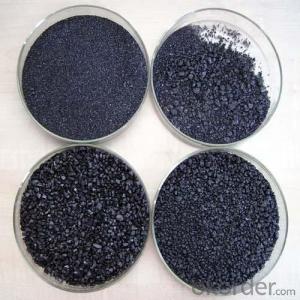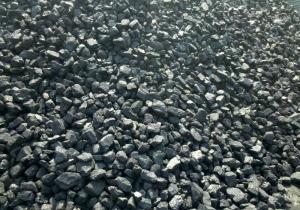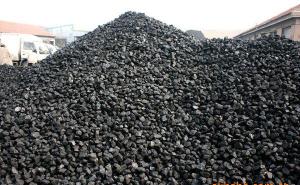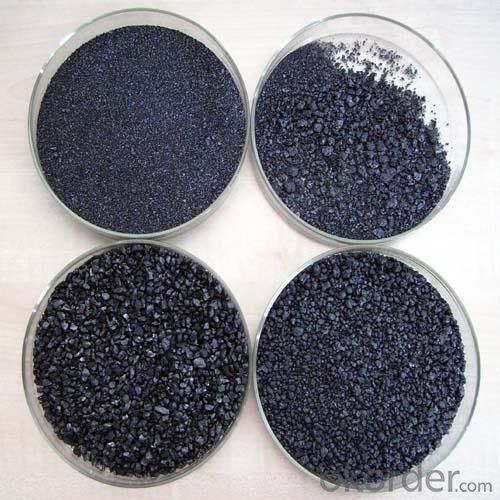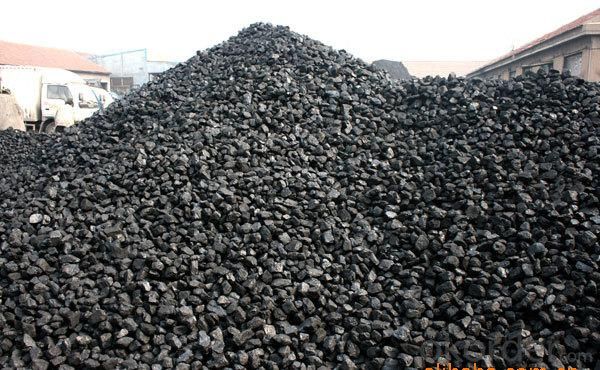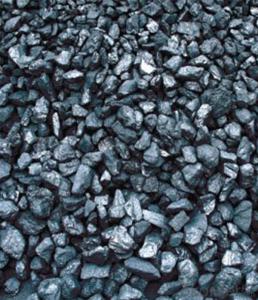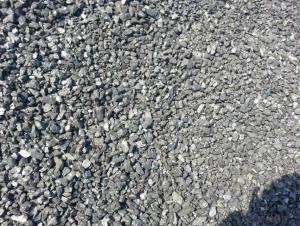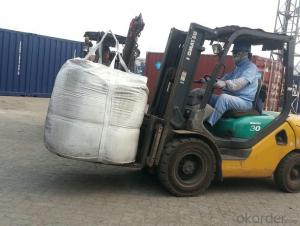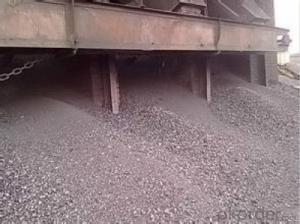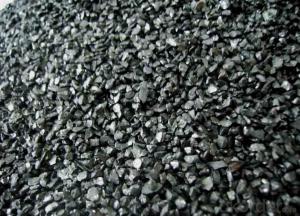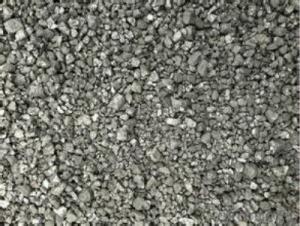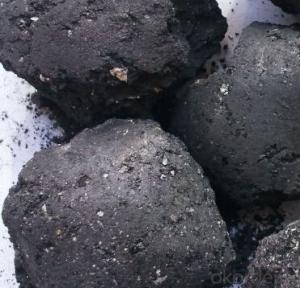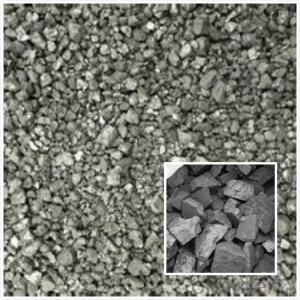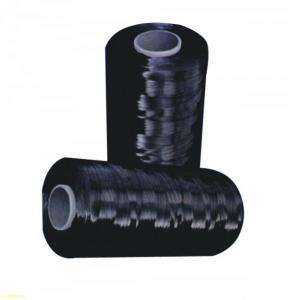Calcined Anthracite High Heat Productivity
- Loading Port:
- Tianjin
- Payment Terms:
- TT or LC
- Min Order Qty:
- 20 m.t.
- Supply Capability:
- 10000 m.t./month
OKorder Service Pledge
OKorder Financial Service
You Might Also Like
Quick Details
Place of Origin: Ningxia, China (Mainland)
Application: steel making
Shape: granule
Dimensions: FC90-95%
Product Type: Carbon Additive
C Content (%): 90-95% MIN
Working Temperature: -
S Content (%): 0.5%MAX
N Content (%): -
H Content (%): 0.6%MAX
Ash Content (%): 8.5%MAX
Volatile: 2%MAX
ADVANTAGE: low ash & sulfur
COLOR: Black
RAW MATERIAL: TaiXi anthracite
Packaging & Delivery
Packaging Details: In 1MT plastic woven bag.
Delivery Detail:30-40 DAYS
Specifications of Calcined Anthracite High Heat Productivity
Carbon Additve low Ash,S,P
FC>95% ASH<4% S<0.3%
It is made from TaiXi anthracite.
instead of pertrol coke reduce the cost
Structure of Calcined Anthracite High Heat Productivity
Shape: granule
Dimensions: FC90-95%
Product Type: Carbon Additive
C Content (%): 90-95% MIN
Working Temperature: -
S Content (%): 0.5%MAX
N Content (%): -
H Content (%): 0.6%MAX
Ash Content (%): 8.5%MAX
Volatile: 2%MAX
ADVANTAGE: low ash & sulfur
COLOR: Black
RAW MATERIAL: TaiXi anthracite
Feature of Calcined Anthracite High Heat Productivity
Specifications (%): | ||||||
Grade | F.C | Ash | V.M | Moisture | S | Size |
CR-95 | ≥95 | <4 | <1 | <1 | <0.3 | 0-30mm |
CR-94 | ≥94 | <4 | <1 | <1 | <0.3 | |
CR-93 | ≥93 | <6 | <1 | <1 | <0.4 | |
CR-92 | ≥92 | <7 | <1 | <1 | <0.4 | |
CR-91 | ≥91 | <8 | <1 | <1 | <0.4 | |
CR-90 | ≥90 | <8.5 | <1.5 | <2 | <0.4 | |
Image of Calcined Anthracite High Heat Productivity
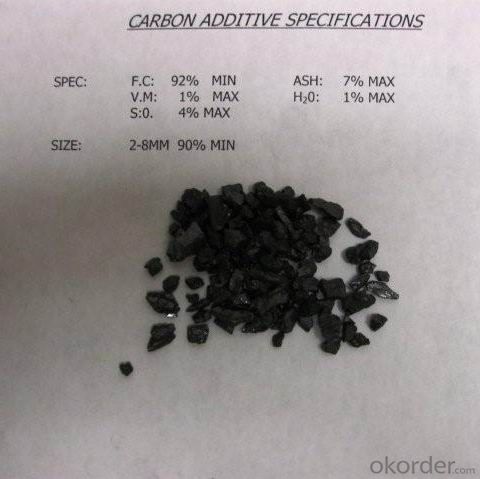

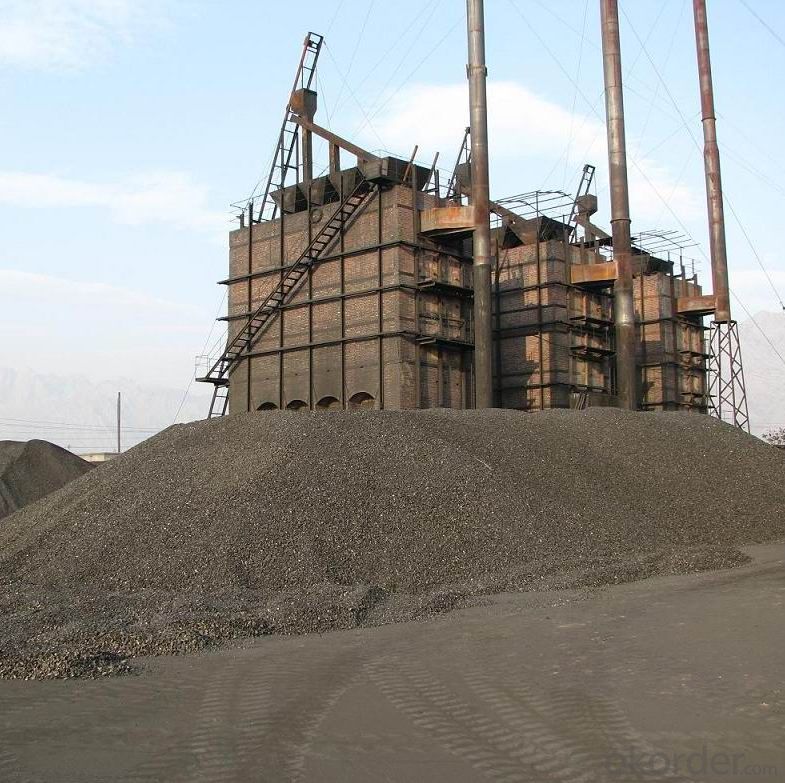
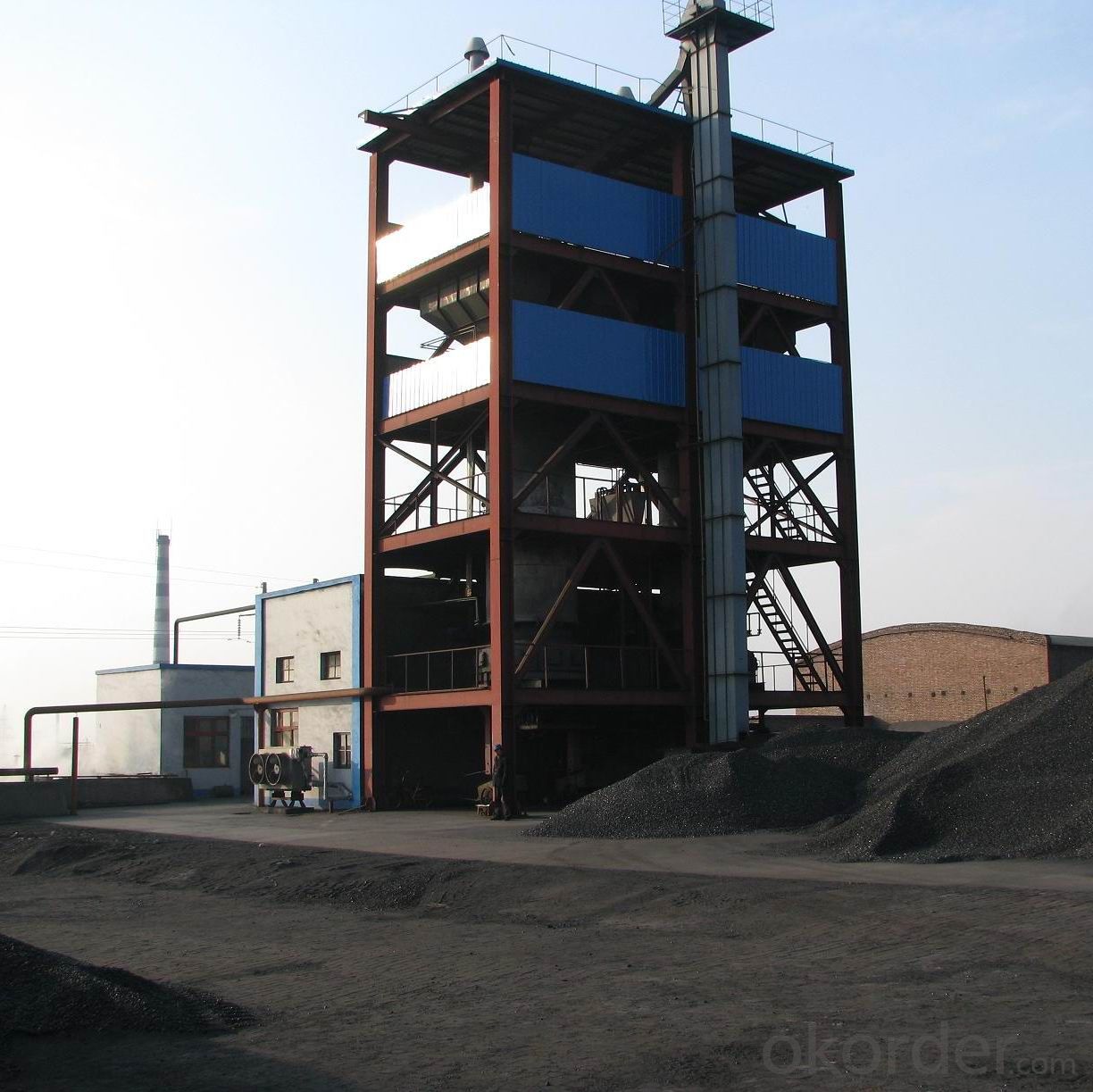
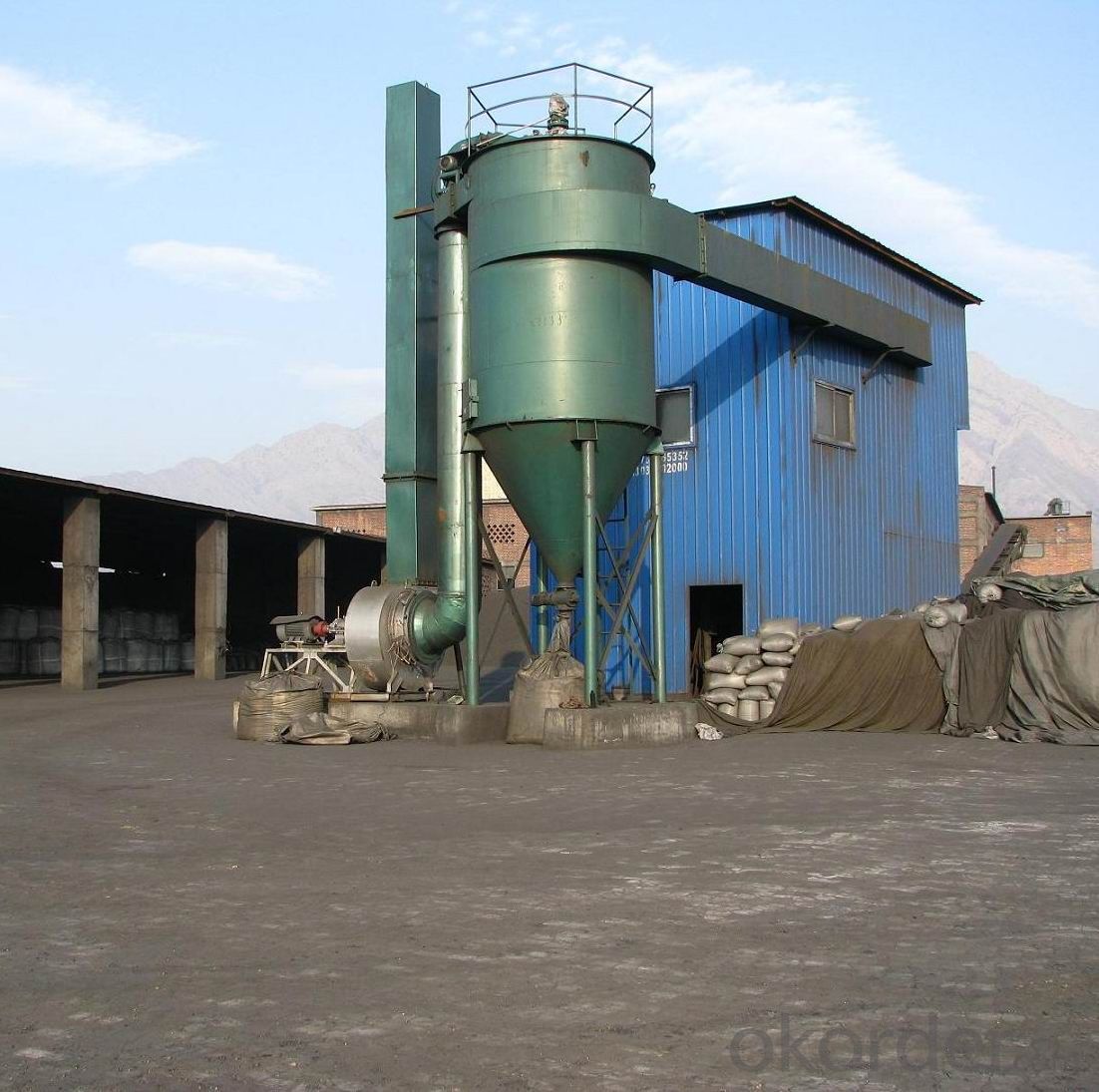

FAQ of Calcined Anthracite High Heat Productivity
Why we adopt carbon additive?
Carbon Additives used as additive in steel making process. It made from well-selected Tai Xi anthracite which is low in content of ash, sulphur, phosphorus, high heat productivity, high chemically activation.
Mainly industry property of it is: instead of traditional pertroleum coal of Carbon Additives, reduce the cost of steelmaking.
Advantage:
Calcined Anthracite High Heat Productivity
1.High quality and competitive price.
2.Timely delivery.
3.If any item you like. Please contact us.
Your sincere inquiries are typically answered within 24 hours.
- Q: How does a kebab cook at home?
- Do you have long fire sticks in your house?...... Yes, just a carbon and burn it over the gas stove...... If not, apply a little oil underneath......Burn, put carbon on the top, pay attention to leave the gap, do not suppress it.
- Q: What are the carbon nanotube applications?
- The hydrogen storage materials: gas adsorption in adsorption is a solid adsorbent surface behavior the occurrence process of adsorbent and solid surface characteristics are closely related. The adsorption mechanism of nanoparticles, it was generally accepted that adsorption of carbon nanotubes is mainly due to the surface hydroxyl carbon nanotubes nanoparticles. The effect of carbon nanotubes on the surface of to hydroxyl and certain cationic bonding, so as to achieve the apparent of metal ions or organic matter adsorption. In addition, carbon nanotube particles have a large surface area, is also an important reason for the adsorption of carbon nanotubes. Zheng Qingrong, Gu Anzhong and [4] were studied on the adsorption behavior of hydrogen in carbon nanotubes Cheng Hui Ming et al. Synthesis of SWNTS treated properly can store hydrogen at room temperature, the hydrogen storage weight of up to 4.2%, and 78.3% of the hydrogen storage under normal temperature and pressure The hydrogen is released, and the remaining hydrogen is released after heating. The SWNTS can be reused and has a high commercial valueThe proton exchange membrane fuel cell (PEM) is a new type of carbon nanotubes: fuel cell vehicle power supply the most potential, the fuel cell through the consumption of hydrogen to generate electricity, the exhaust gas discharged into water vapor, therefore no pollution. It is compared with the lithium ion battery and Ni MH battery has great superiority. Can use carbon nanotubes hydrogen storage material supply hydrogen, can also be through the decomposition of oil and gas and other hydrocarbons or directly from the air to obtain hydrogen fuel cell hydrogen source.
- Q: How are carbon compounds classified?
- Carbon compounds can be categorized according to the type and number of atoms bonded to carbon atoms. There are various types of carbon compounds, including hydrocarbons, alcohols, aldehydes, ketones, carboxylic acids, esters, ethers, amines, amides, and more. Hydrocarbons are carbon compounds solely consisting of carbon and hydrogen atoms. They can be further divided into two main groups: aliphatic hydrocarbons and aromatic hydrocarbons. Aliphatic hydrocarbons include alkanes, alkenes, and alkynes, which are classified based on the carbon-carbon bonds they possess. On the other hand, aromatic hydrocarbons have a ring structure and are known for their aromaticity. Alcohols are carbon compounds with a hydroxyl (-OH) group attached to a carbon atom. They are categorized based on the number of hydroxyl groups connected to the carbon atom. For instance, methanol is a monohydroxy alcohol, while ethylene glycol is a dihydroxy alcohol. Aldehydes and ketones are carbon compounds containing a carbonyl group (C=O). Aldehydes have the carbonyl group attached to a terminal carbon atom, whereas ketones have it attached to an internal carbon atom. Their names are determined by the number and position of the carbonyl group within the molecule. Carboxylic acids are carbon compounds with a carboxyl group (-COOH). They are named by replacing the -e ending of the corresponding hydrocarbon with -oic acid. For example, methane becomes methanoic acid. Esters are carbon compounds derived from the reaction between a carboxylic acid and an alcohol. They have the general formula RCOOR’, where R and R’ can represent any alkyl or aryl group. Often, they are named based on the alcohol and acid used in their formation. Ethers are carbon compounds in which an oxygen atom is bonded to two alkyl or aryl groups. Their names are formed by listing the alkyl or aryl groups in alphabetical order followed by the word "ether". Amines are carbon compounds with a nitrogen atom bonded to one or more alkyl or aryl groups. They are named by adding the suffix -amine to the name of the alkyl or aryl group attached to the nitrogen atom. Amides are carbon compounds with a carbonyl group (C=O) bonded to a nitrogen atom. They are named by replacing the -oic acid or -ic acid endings of the corresponding carboxylic acid with -amide. In summary, the classification of carbon compounds is based on their functional groups and the arrangement of atoms surrounding the carbon atom. These classifications aid in categorizing and studying the diverse range of carbon compounds found in nature and synthesized in laboratories.
- Q: What are the impacts of carbon emissions on biodiversity?
- Carbon emissions have significant impacts on biodiversity. Increased levels of carbon dioxide in the atmosphere contribute to climate change, which disrupts ecosystems and threatens biodiversity. Rising temperatures, altered precipitation patterns, and more frequent extreme weather events can lead to habitat loss, shifts in species distribution, and reduced reproductive success. Moreover, ocean acidification resulting from carbon emissions poses a threat to marine ecosystems, affecting coral reefs and other vulnerable species. Overall, carbon emissions have detrimental effects on biodiversity, potentially leading to the extinction of numerous species and the destabilization of ecosystems.
- Q: How is carbon used in the production of batteries?
- Due to its unique properties, carbon is crucial in the manufacturing of batteries. It serves as an electrode material in primary and secondary batteries. When it comes to primary batteries, carbon acts as the cathode material. It plays a crucial role in facilitating the chemical reactions that occur during the discharge process, allowing the flow of electrons. The high conductivity of carbon is essential for efficient electron transfer, ensuring effective power delivery. Moreover, carbon's stability and low reactivity make it an excellent choice for durable primary batteries. In the case of secondary batteries, such as lithium-ion batteries, carbon is utilized in both the anode and cathode. The anode is composed of graphite, a type of carbon that can intercalate lithium ions during charging and release them during discharging. This process enables the reversible storage and release of energy, making graphite an ideal material for the anode. Carbon also enhances the overall performance of the cathode in secondary batteries. Carbon-based materials, like carbon black, are incorporated into the cathode to improve electrical conductivity and increase the available surface area for reactions. This results in higher energy and power densities, ultimately enhancing the battery's overall performance. Furthermore, researchers are exploring the use of carbon additives, such as carbon nanotubes or graphene, to further enhance battery performance. These carbon-based materials possess unique properties, including high surface area, electrical conductivity, and mechanical strength. These properties have the potential to improve energy storage capacity and battery lifespan. In conclusion, carbon plays a vital role in battery production by enabling efficient electron transfer, energy storage, and release. Its conductivity, stability, and ability to intercalate ions make it an essential component in both primary and secondary batteries, contributing to the advancement of energy storage technology.
- Q: How do you remove the carbon stains on your clothes?
- Can choose 120 solvent xylene, gasoline, alcohol or alcohol xylene soap, gently scrub, to color stain oil in removed and low temperature soaping. Remove paint stains difficult. The new pollution paint stains to timely, with a small brush dipped in banana water (thinner) or four carbon chloride benzene, gasoline, and other organic solvents, gently scrub fabric, and then use the low temperature washing, rinse can be. The old paint stains, first with 120 solvent gasoline soaked, the stain of the fabric and the combination of loose, banana water, benzene 46 family washing and ironing guide removal. If the white cotton polyester fabric. Stains are larger paint stains, can use low concentration of caustic soda liquid soap, soap boiling temperature, also can achieve the ideal effect. The removal ratio of lye soap is 5000 grams of water plus 100 grams of caustic soda, half soap (dissolved after heating temperature 80 to 90 DEG C), i.e. Can be.
- Q: How does deforestation affect carbon levels?
- Deforestation has a significant impact on carbon levels in the atmosphere. Trees play a crucial role in the carbon cycle by absorbing carbon dioxide (CO2) through photosynthesis and storing it in their trunks, branches, leaves, and roots. When forests are cleared or burned, this stored carbon is released back into the atmosphere as CO2, contributing to the greenhouse effect and climate change. Deforestation not only reduces the number of trees available to absorb CO2 but also disrupts the natural balance of the carbon cycle. Forests act as carbon sinks, meaning they absorb more CO2 than they release, helping to regulate the Earth's climate. When forests are cut down, the carbon stored in their biomass is rapidly released, exacerbating the problem of excess CO2 in the atmosphere. In addition to the immediate release of carbon, deforestation also impacts the long-term carbon storage capacity of the planet. Young trees and newly regrown forests have a lower carbon storage capacity compared to older, mature forests. Therefore, when forests are cleared and replaced with young vegetation or non-forest land uses, the ability to absorb and store carbon is greatly reduced. The consequences of increased carbon levels in the atmosphere are far-reaching. Carbon dioxide is a greenhouse gas that traps heat in the Earth's atmosphere, contributing to global warming and climate change. Rising temperatures have a cascade of effects, including increased frequency and intensity of extreme weather events, rising sea levels, and disruptions to ecosystems and biodiversity. To mitigate the impact of deforestation on carbon levels, it is crucial to prioritize sustainable forest management practices and reforestation efforts. Protecting existing forests and promoting afforestation and reforestation can help restore the carbon-absorbing capacity of the planet and contribute to global efforts in combating climate change.
- Q: How does carbon dioxide affect the pH of seawater?
- The pH of seawater is affected by carbon dioxide, resulting in increased acidity. Seawater undergoes a reaction with carbon dioxide, leading to the formation of carbonic acid. This carbonic acid subsequently breaks down into hydrogen ions (H+) and bicarbonate ions (HCO3-), thereby increasing the concentration of hydrogen ions in the water. The rise in hydrogen ions causes a decline in pH, resulting in more acidic seawater. This phenomenon is known as ocean acidification. Marine organisms, including coral reefs, shellfish, and other species that rely on calcium carbonate for their shells or skeletons, can be negatively impacted by ocean acidification. Additionally, the balance of marine ecosystems can be disrupted, and various ecological processes in the ocean can be affected.
- Q: How is carbon used in water filtration systems?
- Carbon is used in water filtration systems as a filter medium or adsorbent. It effectively removes impurities, such as chlorine, volatile organic compounds (VOCs), and other contaminants, by adsorbing them onto its porous surface. This process helps improve the taste, odor, and overall quality of drinking water.
- Q: How does carbon impact the availability of clean energy solutions?
- Carbon impacts the availability of clean energy solutions in several ways. Firstly, carbon emissions from fossil fuel combustion contribute to climate change, which poses challenges to the implementation and effectiveness of clean energy technologies. Rising global temperatures and changing weather patterns can affect the reliability and efficiency of renewable energy sources like solar and wind power. Additionally, the dependence on fossil fuels limits the growth and investment in clean energy alternatives. The transition to a carbon-neutral economy requires overcoming these challenges and reducing our reliance on carbon-intensive energy sources.
Send your message to us
Calcined Anthracite High Heat Productivity
- Loading Port:
- Tianjin
- Payment Terms:
- TT or LC
- Min Order Qty:
- 20 m.t.
- Supply Capability:
- 10000 m.t./month
OKorder Service Pledge
OKorder Financial Service
Similar products
Hot products
Hot Searches
Related keywords
